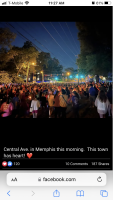Tin Man
Dirt's Childhood Playmate
- Joined
- Mar 9, 2015
- Messages
- 58,379
- Likes
- 57,454
@82_VOL_83
From The Smithsonian online: Wilbert Pearson made the historic flight, for which he became an "ace." Flying the McDonnell Douglas F-15A Celestial Eagle, he began the flight to test the ASM-135 ASAT. Taking off from Edwards Air Force Base, California, Pearson made his way toward the satellite chosen for destruction: P78-1, AKA Solwind.
The P78-1 (Solwind) satellite was launched on February 24, 1979. After a number of years in orbit, its batteries were depleting. By the time of Pearson's historic flight, it was commissioned to be terminated and selected as the target of the ASAT test.
Choosing the right aircraft was critical for this time-sensitive mission. It ultimately came down to the F-15 Eagle. "The F-15 was a real racehorse," explained Pearson. "We could fly supersonic and we could maneuver it to be in the right kind of a climb, and we could integrate all the required systems into the airplane to communicate with the missile. It could physically hold the ASAT weapon. It was a very large missile so it needed a big enough airplane."
After takeoff, Wilbert Pearson took three hours to climb to an altitude of 30,000 feet. He then lit his F-15A Eagle's afterburners and accelerated to Mach 1.3, pulling the aircraft into a 60-degree climb before slowing to Mach .96 as the countdown to the missile launch began. Once the countdown was finished, he hit the "pickle button" and launched the ASM-135 ASAT toward the P78-1 (Solwind) satellite.
Pearson recalled how "it was just a beautiful sight to see the missile suspended there and the flame come out of the rocket motor. And then it took off like a bandit." Unfortunately, he wasn't able to see or know for himself if the missile had reached its target. Instead, he'd established a code with a control room operator that would let him know whether the test was successful.
When he called down to the control room, Pearson didn't even need the code to know the missile had hit its target. When the mic turned on, all he could hear was screaming and hollering, signalling to him that the test had been a success. A satellite had been shot out of space by an aircraft for the first time in history.
From The Smithsonian online: Wilbert Pearson made the historic flight, for which he became an "ace." Flying the McDonnell Douglas F-15A Celestial Eagle, he began the flight to test the ASM-135 ASAT. Taking off from Edwards Air Force Base, California, Pearson made his way toward the satellite chosen for destruction: P78-1, AKA Solwind.
The P78-1 (Solwind) satellite was launched on February 24, 1979. After a number of years in orbit, its batteries were depleting. By the time of Pearson's historic flight, it was commissioned to be terminated and selected as the target of the ASAT test.
Choosing the right aircraft was critical for this time-sensitive mission. It ultimately came down to the F-15 Eagle. "The F-15 was a real racehorse," explained Pearson. "We could fly supersonic and we could maneuver it to be in the right kind of a climb, and we could integrate all the required systems into the airplane to communicate with the missile. It could physically hold the ASAT weapon. It was a very large missile so it needed a big enough airplane."
After takeoff, Wilbert Pearson took three hours to climb to an altitude of 30,000 feet. He then lit his F-15A Eagle's afterburners and accelerated to Mach 1.3, pulling the aircraft into a 60-degree climb before slowing to Mach .96 as the countdown to the missile launch began. Once the countdown was finished, he hit the "pickle button" and launched the ASM-135 ASAT toward the P78-1 (Solwind) satellite.
Pearson recalled how "it was just a beautiful sight to see the missile suspended there and the flame come out of the rocket motor. And then it took off like a bandit." Unfortunately, he wasn't able to see or know for himself if the missile had reached its target. Instead, he'd established a code with a control room operator that would let him know whether the test was successful.
When he called down to the control room, Pearson didn't even need the code to know the missile had hit its target. When the mic turned on, all he could hear was screaming and hollering, signalling to him that the test had been a success. A satellite had been shot out of space by an aircraft for the first time in history.





